Mapping Of Galactic Bar In The Milky Way By Gaia
Eddie Gonzales Jr. – MessageToEagle.com – Researchers created a map of the bar-shaped collection of stars at the center of our Milky Way galaxy, by combining ESA’s Gaia mission’s second data release (DR2) with complementary observations by ground- and space-based telescopes, the catalog
The unprecedented catalog contains the brightness, positions, distance indicators and motions across the sky for more than one billion stars in our Milky Way galaxy, along with information about other celestial bodies.
 Display of Gaia data combined with other surveys and StarHorse code over an illustration of the Milky Way. A bar structure is clearly visible in the middle. Credit: NASA/JPL-Caltech/R. Hurt; Starhorse Overlay: A. Khalatyan
Display of Gaia data combined with other surveys and StarHorse code over an illustration of the Milky Way. A bar structure is clearly visible in the middle. Credit: NASA/JPL-Caltech/R. Hurt; Starhorse Overlay: A. Khalatyan
“We looked in particular at two of the stellar parameters contained in the Gaia data: the surface temperature of stars and the ‘extinction’, which is basically a measure of how much dust there is between us and the stars, obscuring their light and making it appear redder,” Friedrich Anders ICCUB member and lead author of the new study, conducted by researchers from the Institute of Science Cosmos of the University of Barcelona and from the Leibniz Institute for Astrophysics Potsdam (Germany), said in a press release.
“These two parameters are interconnected, but we can estimate them independently by adding extra information obtained by peering through the dust with infrared observations.”
“With the second Gaia data release, we could probe a radius around the Sun of about 6500 light years, but with our new catalogue, we can extend this ‘Gaia sphere’ by three or four times, reaching out to the centre of the Milky Way,” explains co-author Cristina Chiappini from Leibniz Institute for Astrophysics Potsdam, Germany, where the project was coordinated.
At the center of our galaxy, the data clearly reveals a large, elongated feature in the three-dimensional distribution of stars: the galactic bar.
“We know the Milky Way has a bar, like other barred spiral galaxies, but so far we only had indirect indications from the motions of stars and gas, or from star counts in infrared surveys. This is the first time that we see the galactic bar in three-dimensional space, based on geometric measurements of stellar distances,” says Friedrich Anders.
“Ultimately, we are interested in galactic archaeology: we want to reconstruct how the Milky Way formed and evolved, and to do so we have to understand the history of each and every one of its components,” adds Cristina Chiappini.
Written by Eddie Gonzales Jr. – MessageToEagle.com Staff
Related Posts
-
 Two Supermassive Black Holes Will Collide With Tremendous Force, New Study Says
No Comments | Sep 22, 2015
Two Supermassive Black Holes Will Collide With Tremendous Force, New Study Says
No Comments | Sep 22, 2015 -
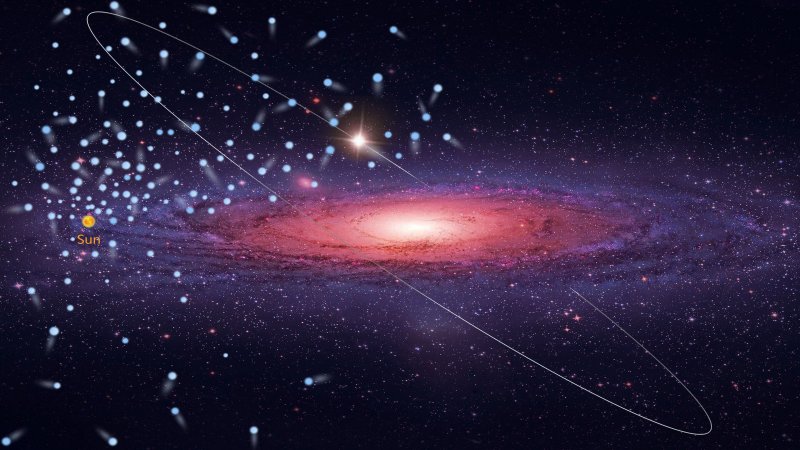 Astronomers Detected 591 High-Velocity Stars
No Comments | Dec 30, 2020
Astronomers Detected 591 High-Velocity Stars
No Comments | Dec 30, 2020 -
 A Star Is Born: Study Reveals Complex Chemistry Inside ‘Stellar Nurseries’
No Comments | Feb 7, 2023
A Star Is Born: Study Reveals Complex Chemistry Inside ‘Stellar Nurseries’
No Comments | Feb 7, 2023 -
 Juno Mission Captures Images Of Volcanic Plumes On Jupiter’s Moon Io
No Comments | Jan 7, 2019
Juno Mission Captures Images Of Volcanic Plumes On Jupiter’s Moon Io
No Comments | Jan 7, 2019 -
 Cycle Of Spectacular Disturbances At Jupiter’s Equator – Identified
No Comments | Dec 21, 2018
Cycle Of Spectacular Disturbances At Jupiter’s Equator – Identified
No Comments | Dec 21, 2018 -
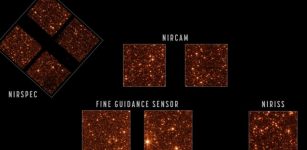 NASA’s Webb Telescope – Ready For Instrument Commissioning
No Comments | Apr 29, 2022
NASA’s Webb Telescope – Ready For Instrument Commissioning
No Comments | Apr 29, 2022 -
 Quest For Planet X Continues: Several Never Before Seen Objects Discovered Extremely Far Away From Our Sun
No Comments | Aug 29, 2016
Quest For Planet X Continues: Several Never Before Seen Objects Discovered Extremely Far Away From Our Sun
No Comments | Aug 29, 2016 -
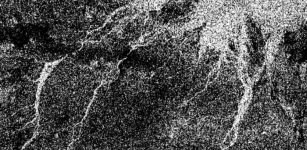 Titan’s River Maps May Advise Dragonfly’s Sedimental Journey
No Comments | Oct 19, 2021
Titan’s River Maps May Advise Dragonfly’s Sedimental Journey
No Comments | Oct 19, 2021 -
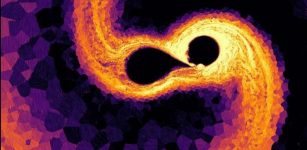 Magnetars: Strongest Magnets In The Universe In Focus
No Comments | Oct 10, 2019
Magnetars: Strongest Magnets In The Universe In Focus
No Comments | Oct 10, 2019 -
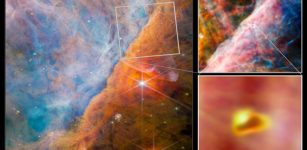 First Detection Of Crucial Carbon Molecule Made By Webb
No Comments | Jun 26, 2023
First Detection Of Crucial Carbon Molecule Made By Webb
No Comments | Jun 26, 2023
